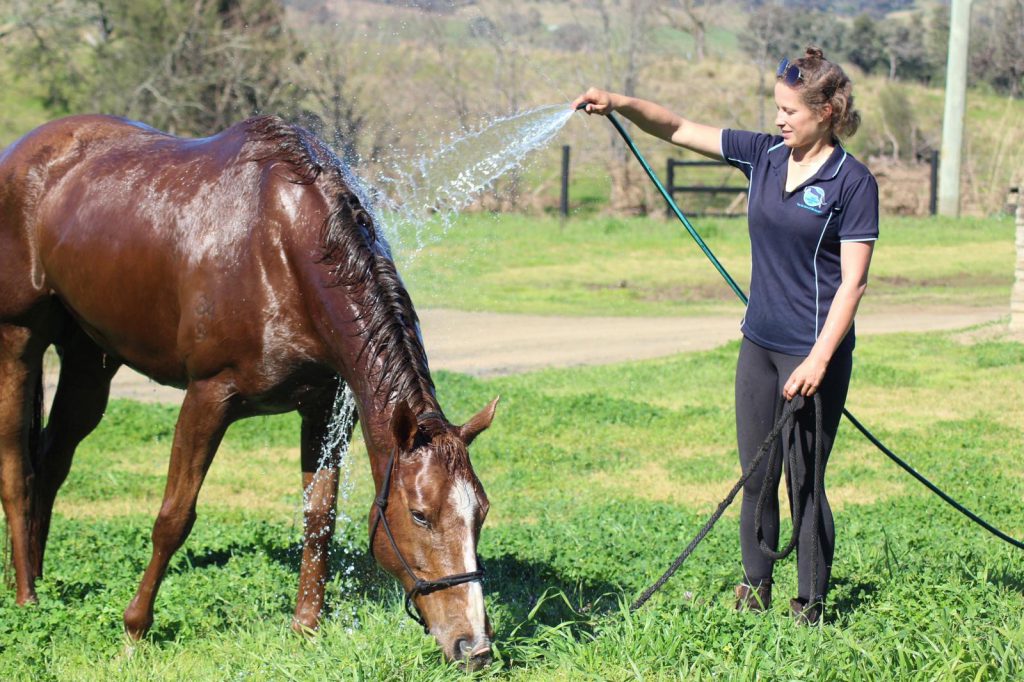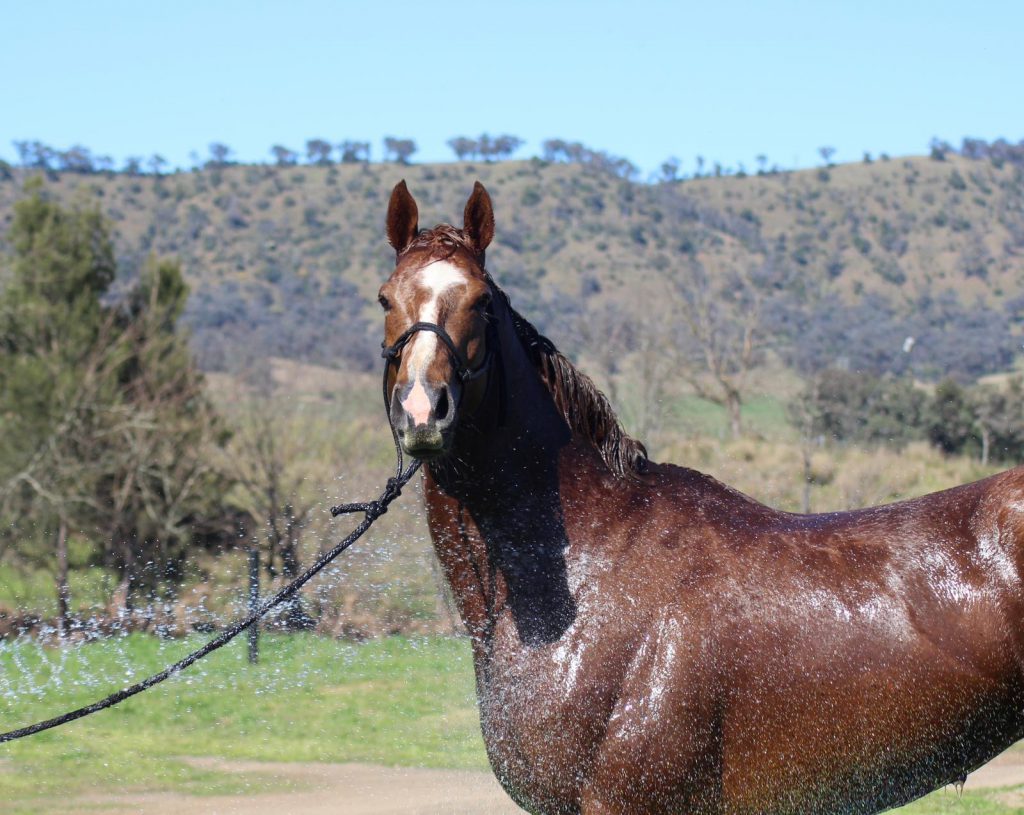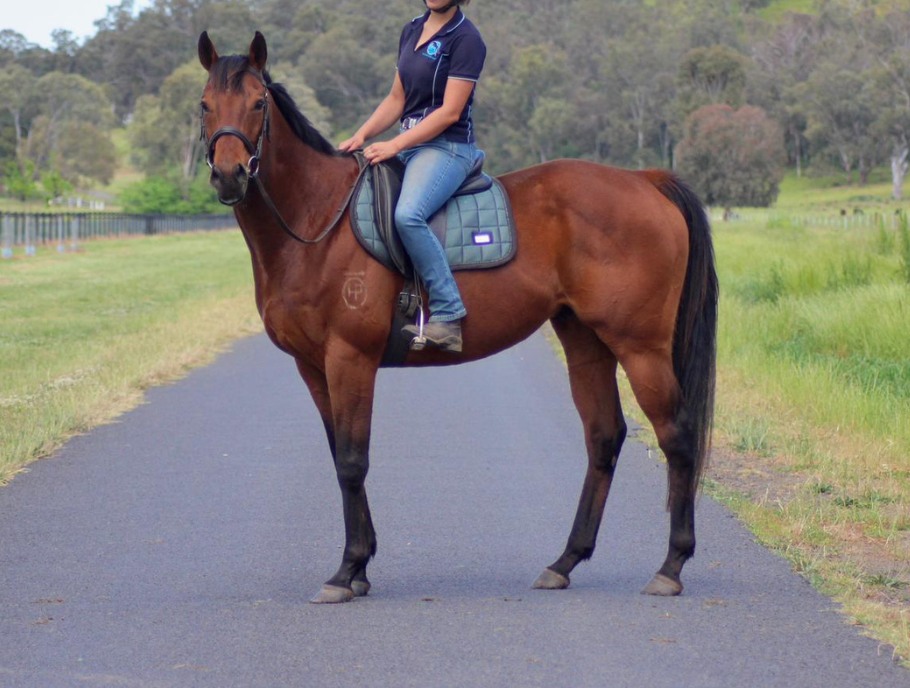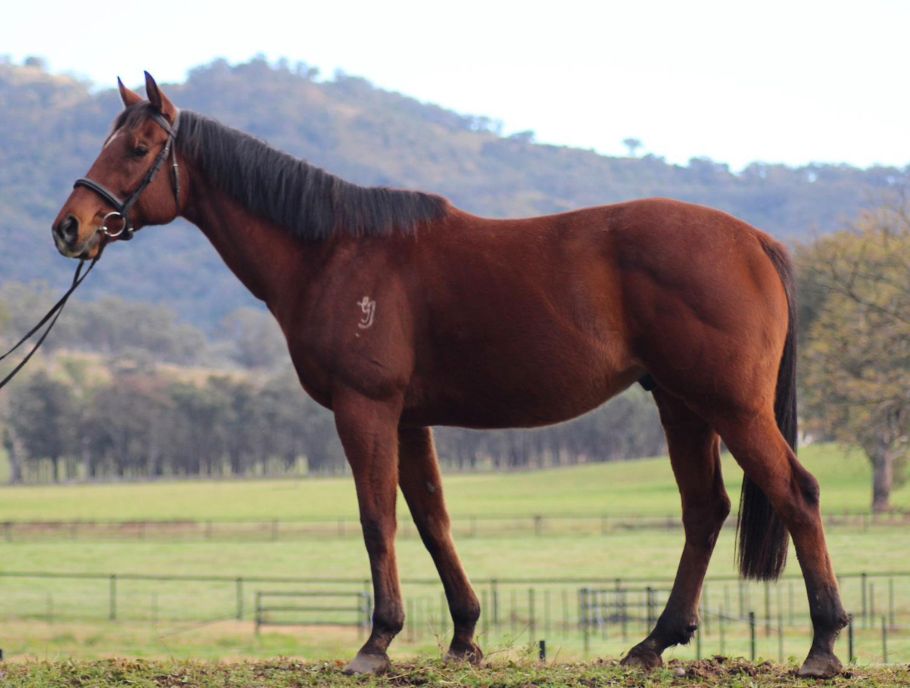
Keeping Cool: Caring for Thoroughbreds in Hot Weather
With another Australian summer on the horizon, horse owners across New South Wales are reminded that rising temperatures can quickly challenge the comfort and wellbeing of retired Thoroughbreds. Whether enjoying life in a paddock or light work, these horses still require attentive summer management to stay healthy and hydrated.

Understanding Heat Stress
Horses rely on sweating and evaporation to regulate body temperature. When humidity is high or shade is limited, this process becomes less effective, making horses, particularly older or heavier individuals, susceptible to heat stress.
Early signs include rapid breathing, nostril flaring, weakness, dark or congested mucous membranes, or unsteadiness. Severe heat stress may lead to collapse or organ damage if left untreated. Owners should remain alert, particularly on still, humid days or during transport.
Hydration and Electrolyte Balance
Adequate water access remains the foundation of heat prevention. Thoroughbreds should have unrestricted access to cool, clean water at all times, with troughs checked daily for contamination, leaks, or algae. Adding plain salt (sodium chloride) to feed can stimulate thirst and encourage better hydration. For horses that sweat heavily or have limited access to fresh pasture, balanced electrolyte supplements may assist in replacing sodium, potassium, and chloride losses. Always provide free-choice water alongside supplements and avoid offering electrolytes in water unless you’re confident the horse will continue to drink normally.
Shade and Paddock Management
Access to shade is essential. Trees, shelters, or well-oriented stables offer refuge from direct sun. Where natural shade is limited, owners should consider portable shelters or shade cloths to provide relief during peak daylight hours. Good airflow is equally important as stagnant, enclosed spaces trap heat. If stabled, ensure doors and windows allow cross-ventilation. Light exercise or grooming sessions are best scheduled early in the morning or late in the evening when temperatures are cooler. After exercise or transport, gentle hosing can lower body temperature effectively. Focus on large muscle groups such as the neck and chest, then scrape off excess water to maximise evaporative cooling. Allow horses time to walk and recover in a shaded area.
Recognising and Managing Heat Stress
If a horse appears lethargic, stops sweating, or fails to recover after exertion, move it immediately to shade or a breezy spot. Apply cool water continuously and contact a veterinarian for guidance. Untreated heat stress can cause dehydration, muscle damage, and, in extreme cases, organ failure. Prompt action greatly improves recovery outcomes.

| Key Tips for Summer Horse Care |
| • Provide constant access to clean, cool water. |
| • Add salt or electrolytes as advised by your vet. |
| • Check water troughs daily and keep them clean. |
| • Offer shade and good ventilation in stables and yards. |
| • Exercise during cooler hours of the day. |
| • Hose and scrape horses after work to promote cooling. |
| • Seek veterinary attention immediately if heat stress is suspected. |
Latest Horses
Team Thoroughbred Newsletter
Subscribe to Redzel’s Roundup, the Team Thoroughbred e-newsletter, and be the first to know about our special events and activities, receive important information from our equine welfare veterinarians, read good news stories, go into the draw for Team Thoroughbred giveaways and most importantly be part of a passionate community of Thoroughbred lovers!


